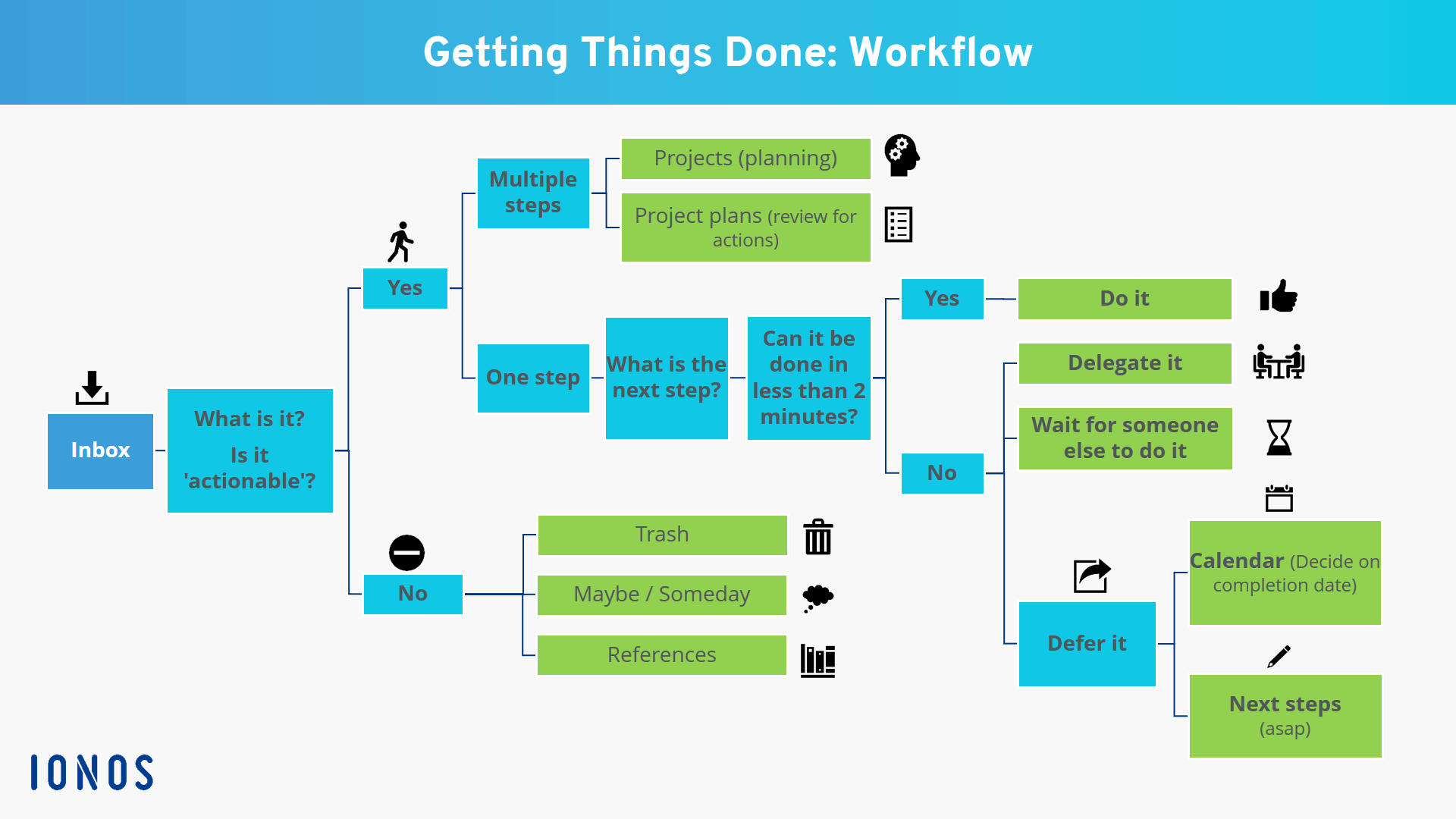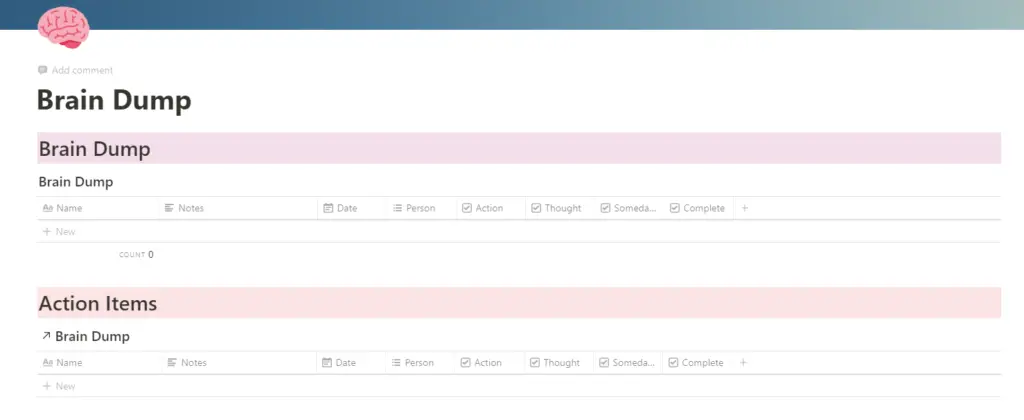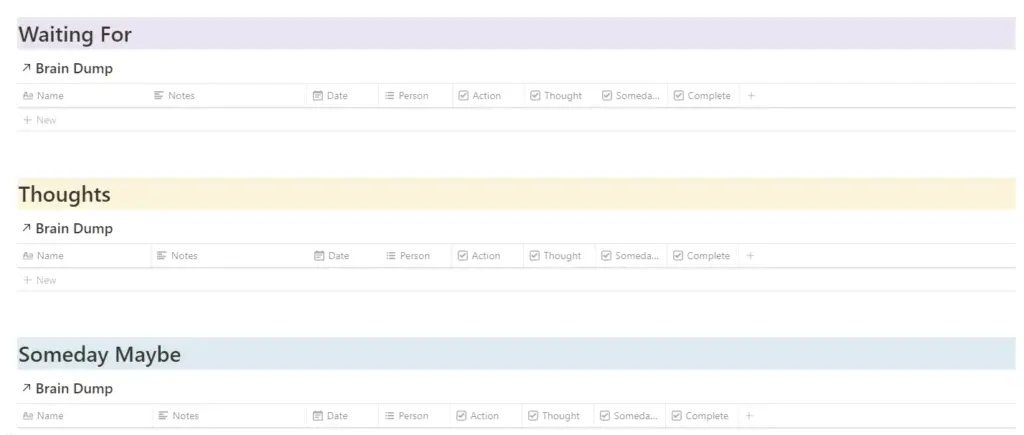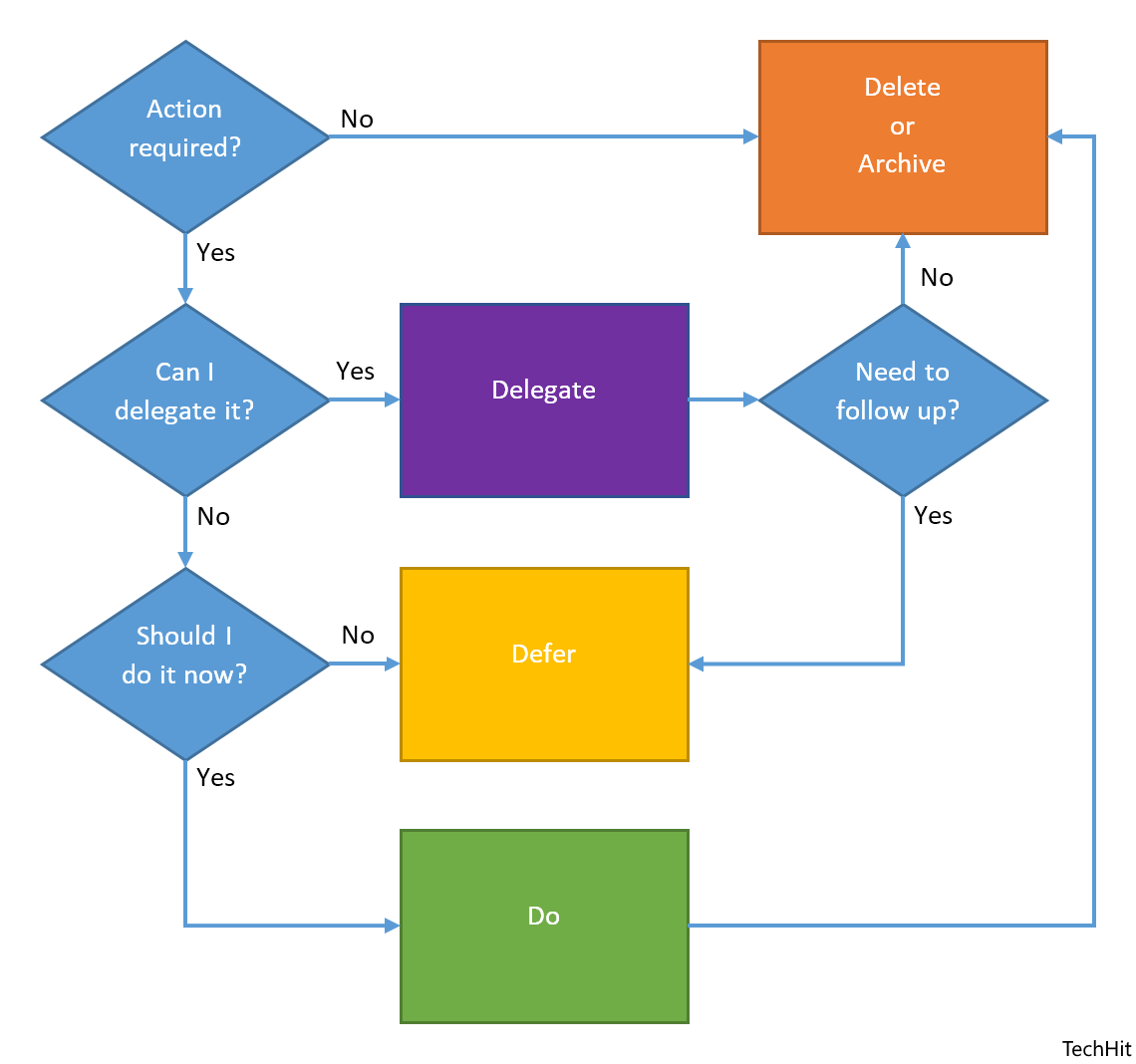Welcome to this post about How To Implement the GTD System in Notion!
I recently read Getting Things Done (GTD) by David Allen. I had heard a lot of good things about the book so I decided to give it a try and I thoroughly enjoyed it.
A lot of the things mentioned in the book were not new to me, but there were several things that were. Whenever I read a book, I try to come up with a few actionable steps I can take based on that book.
In this case, I’m going to try to implement the GTD more formally in my life. But, that’s not all…
For the last few weeks I’ve always been working on setting up Notion for the first time. Just like GTD, I’ve heard great things about Notion. However, up until this month I have been unable to join the Notion hype train.
As I read GTD and set up Notion simultaneously, I started to realize that this was the prime opportunity to make some true changes to my current productivity system.
So in this post I hope to share my thoughts regarding both GTD and Notion as well as how I plan on integrating them together into one productivity system.
Let’s get into it!
GTD Methodology
For the purposes of this post, we’re not going to dive too deep into the GTD methodology. The assumption here is that you have either already read this book or are familiar enough with the processes to have a basic understanding of the GTD method. In case you haven’t heard of GTD before, it is a 5 step process to live a more productive life:
- Capture
- Clarify
- Organize
- Reflect
- Engage
I believe the most important part of this method is capturing. Capturing simply refers to taking everything from inside your head or in your physical space and putting it into an in-tray.
The idea behind this is to clear your mind for more important thinking. Once you can rest assured that everything you were worried about is written down somewhere, you are free to use your mind how it was intended.
I’ve been using this “brain dump” method for quite some time now. I can’t even begin to express how beneficial it has been in my life.
Once your thoughts are listed, you’re able to move on to new thoughts and eventually return to this list where you will clarify, organize, reflect, then engage on the contents.
The general workflow looks like this:

GTD Criticisms
For the most part, myself and others mostly agree with the concepts in Allen’s book. However, after some research it sounds like I share a lot of common criticisms with other people.
The first point of controversy is the next actions list. Essentially, after dumping everything out of your head, you’re supposed to compile a list of actions you need to take next. This sounds fine, however this list often gets way to long, disorganized, and hard to manage. I think most people would prefer to manage these types of actions on their calendars.
Allen advocates for a limited use of a calendar in GTD. He argues that calendars should be reserved for specific events that have to happen on those specific dates and times. While I agree with this for the most part, I also disagree.
I like to add tasks to my calendar as well that aren’t time-specific. The reasoning behind this is so that I know exactly when I’m going to work on something. If I don’t schedule it in my calendar, it will procrastinated far too long. The calendar acts as a way for me to set deadlines for myself so I stay on top of my work.
However, I do like one aspect of the next actions list…the mentality. In my calendar system, once my scheduled work is done for the, I stop working and wait for the next day to pick up scheduled work again.
In GTD, you would just bounce from one action to the next until you decided to call it quits for the day. Since there’s almost a never ending to-do list, you constantly work on your next action list until it’s empty.
The mindset that I like here is, “Okay I’m done with this, what’s next?”. In theory someone using the next action list would work through their tasks faster than I would because I would stop each day once my scheduled work is done and start new work the next day.
The other major criticism that people have is that the book seems a little outdated. While the book was recently updated to be more modern, it still seems like it doesn’t fully apply to today’s technology available.
For example, Allen keeps a separate list of things that he will do at various locations. In today’s work environment, work can be done anywhere, even from home.
Not to mention, Allen uses a lot of paper in his productivity system which I think is pretty uncommon nowadays.
Setting Up Notion
I think everyone can agree that Notion is fairly difficult to get started with. There was a huge sense of feeling overwhelmed and not knowing what I should do first.
That’s probably the reason why it took me so long to set up Notion for my life. If you want to set up Notion, you really need to set aside several hours or even several days to sit down and figure it out.
The good news though is that once it’s set up, your life can become way more organized and productive.
From my perspective, Notion can become the one stop shop for note-taking, checklists, to-do lists, goal-setting, habit tracking, project managing, and task managing. The only thing that I don’t think it can replace is a separate digital calendar (even though there’s one built into Notion) as well as cloud storage like Google Drive.
Notion Criticisms
Now I obviously already mentioned that Notion is fairly complicated and hard to set up, but I do have a few other criticisms that I think you should keep in mind when designing your own productivity system.
The first of which is that using a Notion database a brain dump is much slower than keeping a traditional list.
For the last week I tried to use a database as my brain dump that way I could sort it immediately and automatically. However, it did not work well because it takes too much time to fill out each column/property.
In situations where my mind is racing, I need to be able to record ideas quickly before I forget them. I think a better solution is to use a traditional list to record ideas, then go back and sort them later.
The other criticism I have has to do with backups. My plan is to gradually move more and more of my life to Notion which could be problematic if Notion just stopped working one day.
They have the ability for you to export everything, but the formats are limited and hard to work with. I would like the backup process to be a bit more convenient and simple.
How To Implement the GTD System in Notion
In this section I am going to show you what I originally set up on Notion to implement the GTD system. In the following section I am going to show you what I tweaked about the GTD system to accommodate my current productivity system.
I started by creating a brain dump page that looks like this:

The top “Brain Dump” section is where I would dump everything that was inside my head. I would write down a name for the item, any notes, the current date, the person responsible, then whether it was an action, thought, someday maybe, or complete.
Depending on what checkbox I selected, the item would be filtered into the appropriate list below:

Each list would require a different kind of response. The most elaborate one was the action items list. If an item required an action, it would be sorted to this separate tasks page.
Here I would create a much more sophisticated entry for each item that looked like this:

As you can see, the columns/properties come from the GTD method. The idea was that it would allow me to further sort, prioritize, or clarify each item.
I could then choose to engage with each item depending on my circumstance, level of energy, time available, etc.
I could follow the Eisenhower Matrix as well like this:

My New Productivity System
You may have noticed that I was writing in the past tense in that last section and that’s because I am no longer using that system.
I didn’t make it more than a few days using that system before I switched back to a simple, traditional list. I believe this is because the GTD system is too formal and complicated for someone like me.
Most things in my life are pretty simple and don’t require that much detail or thought. What’s more important to me is the speed at which I’m able to think, process, and move through my everyday life.
As I mentioned, that Notion system that I set up took far too long to fill out each column/property for every item in my head.
So instead, I’m going back to what has worked well for me which is a traditional brain dump list. This list will still be housed in Notion, just without the database this time.
With that said, I still intend to implement several ideas from the GTD system into my Notion:
- Decision Making Methods – I still plan to use the do, delegate, defer, or delete decision method with my brain dump.
- Waiting For – I’d like to maintain a running list of things I’m waiting for from other people so I don’t always feel the need to keep that information in my head.
- Someday Maybe – The someday maybe list is intended for projects that you may want to take on in the future, but don’t have the time or resources to right now.
- Projects List – I think I can do a better job of keeping a running list of all projects I have going on and the tasks that are required for each.
- Questions – Allen suggested keeping a list of questions you have for significant people in your life (boss, spouse, partner, etc.) so you know what you need to ask them next time you see them.
- Reminders – Sometimes there’s things in your life that don’t necessarily require specific actions, but that you would like to remind yourself of in the future.
- Checklists – Finally, Allen suggested that you keep checklists for whenever you need to remind yourself of things temporarily until the processes become automatic.
Using a Bullet Journal and Calendar Along with Notion
For a long time I’ve had 3 main tools for my productivity system:
- Note Taking App
- Bullet Journal
- Calendar
At the start of this post I mentioned that Notion could replace almost every tool you use in your life besides a calendar. Holding true to that statement, I no longer plan on using any other note taking app or even my bullet journal.
I’ve always used my bullet journal as somewhere to write goals, track habits, and make daily to-do lists. However, I’ve always found it redundant to write daily to-do lists in my bullet journal when I have everything listed on my calendar as well. Therefore, I’m going to stop using my bullet journal and instead use Notion to write goals and track habits.
This means that my entire productivity system will be digital for the most part. Which is scary and exciting. In my post about the Digital vs. Analog Productivity System, I laid out the advantages of each:
Advantages of the Digital System
- Easy Organization
- Fast
- Accessible Anywhere
- Quick Note Taking
- Automated
- Long Term Storage
- More Secure
- Searchable
- Shareable
Advantages of the Analog System
- Satisfaction of Checking Things Off
- Tangible
- Customizable
- Prioritization
- Review
- Simplicity
- Retention
- Less Distractions
While I’ll be missing out on a few of these advantages by going fully digital, I think there’s a few things I need to remind myself.
- Notion is a lot more customizable than I realized and quite honestly much more organized that anything I could on on paper. Plus, it’s a lot faster to pretty things up and reorganize if I have to.
- One thing I really liked about the analog system was the fact that it’s very easy to look back and review what you were doing in the past. I thought this was really important to me, but I hardly ever do this with my bullet journal. The only time I do is on my calendar.
- While you remember things better when you physically write them down, I think I can just as easily pull out my phone and check something on Notion if I don’t remember. I would much rather have my list easily accessible than trying to remember things in my head.
The Takeaway
That’s it, that’s how to implement the GTD system in Notion! Sorry for kind of going all over the place in this post, but I feel like everything was closely related. I hope you got some value out of this post and I would love to hear any comments, questions, or concerns down below! Otherwise, best of luck implementing the GTD system in Notion!
